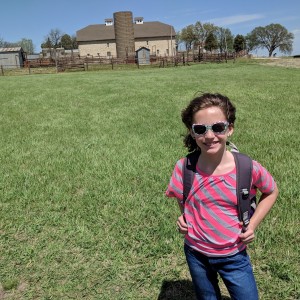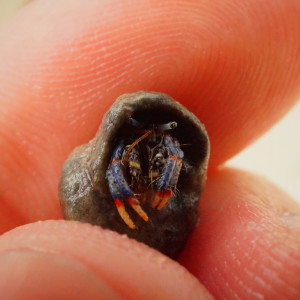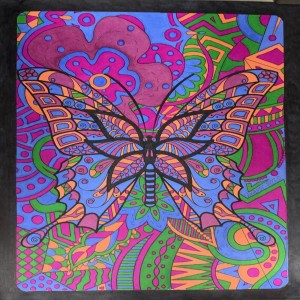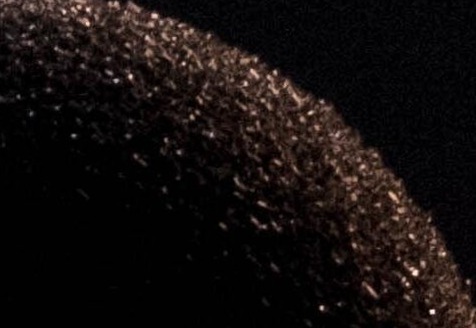Episodes

Wednesday Oct 27, 2021
Wednesday Oct 27, 2021
I found Jonathon Stalls on TikTok, where @pedestriandignity highlights the ugly, unpleasant and, worst of all, dangerous world of pedestrian travel in today's towns and cities. Sidewalks are overgrown, shoved next to roaring highways, or stop in the middle of nowhere for no reason. And that's just for those who can walk comfortably: What about the strollers? The wheelchairs? The walkers?
Pedestrians don't have enough dignity. The commercial and residential world around us ignores them.
This episode should move you. Are you moved? Then get moving! Get out of your metal car box and flee your climate-controlled, artificial, sanitized home for the free air, wind, sun and greenery of the world. Take your friends! Take your colleagues! Imagine what life as an embodied person moving through the world could look and feel like ...
I love this topic, I dig Stalls' energy, I love his art and activism in Intrinsic Paths, and I support his Patreon. You should, too, if people in nature is a thing you think about.

Wednesday Oct 13, 2021
Wednesday Oct 13, 2021
She saw her aunt doing it decades ago and got into it then. This spiritual movement of body and energy is less exercise (Tai Chi) and more moving chi. Do the movements standing. Or sitting. Or visualize them lying down.
Rachel (who was my very first What People Do podcast guest ever) swears by Tai Chi Chih (tay chee chuh) and has found such joyous rewards through the movements that she's a certified teacher.
Dive in with us ... and check out the originator, the man it came to, Justin Stone doing a movement here.

Tuesday Aug 24, 2021
Tuesday Aug 24, 2021
He studied and worked with Lama Surya Das for years. He's got a cool podcast, online courses, a published set of meditations and he's working on an app. This cat has some cool thoughts and a thoughtful and very ecumenical and open-minded approach to quieting the mind.
P.S. The picture is my daughter from years ago from, and she learned a little meditation with a counselor in a group in elementary school. But she doesn't do it now. I don't think. She should start again. I mean, she just started middle school in person. She's gonna need it.

Monday Aug 16, 2021
Monday Aug 16, 2021
Educational games get a bad rap. If more of them were made by Adam Clare, maybe I'd like them more. Adam admits some of the things that make bad educational games bad, but then makes interesting distinctions between free play and designed games and delves into how education infuses his views on the environment and, yes, on COVID. I mean, can we escape it? We can't.
You should play Dr. Trolley's Problem, if you're curious. While rudimentary in its graphics, wave after wave of consideration, reconsideration and repositioning of the classic philosophical problem makes it a good thought experiment to explore where you come down when it comes to life, death, utilitarianism and hard choices.
While we didn't discuss it, Adam also helps curate news on Things Are Good. If you need a nearly daily dose of positive news in a maelstrom of negativity, bookmark it, kids.

Wednesday Jul 21, 2021
Wednesday Jul 21, 2021
I noticed during then pandemic that one of the home owners whose property butts up against a trail at a nearby park started putting up flowers. And signs. And a bench. And nice messages for folks who were being emotionally beaten up by the pandemic.
It started with being irritated with a bunch of overgrown poison ivy and a tendency to flood during rain. And it turned into something special. People sent him letters. Park walkers talked to him on days when he was out working on it. Somebody painted his garden, and that hangs in his home office. Somebody wrote him a poem.
But it turns out that land wasn't his land ... so ...
P.S. The picture is my daughter from years ago from, you guessed it, another park. She just got back from Europe. She's a world traveler now!

Wednesday Jul 07, 2021
Wednesday Jul 07, 2021
It's been a long time, so we're gonna call this season two, yeah?
We're back with a personally helpful conversation about writing: how she does it, how she did it, how she started, and, because I'm self-centered, what I can learn (and by extension, you can learn) from her about my own writing.
Find out how the first hit of audience dopamine hit for Gabs with her first fan, what she does to make sure she keeps writing in her busy life, and why she thinks anyone who wants to write should just write and not put too high expectations on the product and process.
If you've never written before, you think you might want to write a longer book, and you think you want some shared social accountability and some gamification, try NaNoWriMo (National Novel Writing Month). It helped her.
Want to read Gabs' cool new blog? I got you.
P.S. As always, that pic is my daughter, years ago, out on the prairie. I like it, so there you go.

Tuesday Jan 05, 2021
Tuesday Jan 05, 2021
My friend Ryan is a master of investigating technological problems as well as a beautiful, efficient, brilliant designer in physical media and in the digital world.
And he has hermit crabs. So, of course, I skipped right to that in my podcast with him here.
They live in his house. His 6-year-old (at the time) daughter wanted them and named them (but then, of course, Ryan winds up caring for them, reluctant-sitcom-dad-style).
“A larger pet was never going to get through the parental authorities,” Ryan says of his daughter’s winning pitch for the crustaceans.
Ryan learned a lot from his first four hermit crabs (the enclosure was too small for all of them, unknown to him at the time).
Join us as he explains his journey to better serve and care for his little beasts. And get Ryan’s quick checklist.
WANT TO KNOW MORE?
> Hermit crabs are in the animal order Decapoda, which literally means "10-footed,” but whose order animals can have as many as 38 appendages. “They let a lot of people into this club who aren’t necessarily 10-footed,” Ryan says. “A lot of times it just means creepy-crawly at the bottom of the sea and you’ve got lots of appendages.” Go figure.
> Want to learn more? Check out the Hermit Crab Association or any of the Facebook groups (you decide how nice the folks are and whether you want to stick around).

Wednesday Oct 28, 2020
Wednesday Oct 28, 2020
NOTE: Hey. I’ve been gone a while. I’ve got two podcast interviews lined up from before. Now they’re gonna come out. This one, now. Another one, soon. Then … I don’t have any more interviews lined up yet. I’m a firm believer that everyone has something important or fun or relatable to say about something. Who’s next? Also, there’s a grind as Bash’s phone call fell out, but I think the gist of it carries through.
“The only thing I know … is how to fail at writing plays,” jokes (not jokes) Bash Halow off the bat.
Bash is a speaker and an article writer and a practice management consultant for veterinary practices and a former veterinary technician and a former veterinary practice manager. And I bet, although I didn’t get into it, a lot of other stuff.
He promised me a couple years ago that if he got actors to read a play of his, he’d invite me to NYC. So right after getting laid off, I headed off to the Big Apple days after my layoff. NYC was neat. My best friend showed me around town (we mocked many things). And Bash’s play, read by actors and actresses he knew, was really marvelous: surreal, emotional, strange, funny, old-fashioned, modern. It kind of was all the things.
Best of all, no matter how smart it got, it always fixated on heart and emotion. Kinda like every time I’ve ever seen Bash teach or work on something.
So that’s how we wind up here, with Bash, talking plays. They are a way for Bash to bring the ideas and thoughts floating around his head out into the light, in engagement with other artists and audiences.
“I can’t be the only one who thinks like this!” he says as his inner voice. “Let’s try one more time!”
But to just explain it you, well, “that just lets all the air out of it,” Bash says. Better to leave the Easter eggs and the hints and the clues and leave you to think it over yourself.
Find out how 8th-grade English teacher Ms. Knox pushed Bash into stream-of-consciousness journaling (“like unlocking Pandora’s box,” he says), how Michael Cunningham (The Hours) manages his writing process and why he thinks his latest play has truly said what he wanted to say in writing.
My favorite thought? “If you’re writing something and it feels great, it’s probably great,” he says. Don’t hand other people your bulls***. You know when it’s good.
WANT TO KNOW MORE?
> Remember Matthew Shepard? His tragic murder inspired was a major impetus behind Bash’s latest play.
> Bash has a couple of one-act plays for sale. I adore them. They’re heavy on the surreal and just my cup of tea. His latest I saw in NYC is more than a few steps beyond these, so beg him for a copy. Maybe he’ll share.
> Our intrepid interviewee name-drops a Jeremy Irons performance in a play where a playwright talks about a cricket-bat approach to writing. It’s The Real Thing by Tom Stoppard. Check out a little of the dialogue and thoughts from a blogger here.
> Heard of Tereze Gluck, sister of a Noble Prize winner? I had not. She wrote a story Bash loves, “The Coast of Massachusetts.” (Read free here with a JSTOR registration.) “She was such an original thinker,” Bash laughs. When Bash asked her once if she missed writing later in life, she told him, with wry humor, "No, no, no, it’s easier to take Prozac.” Here is a collection of short stories you can also read free.

Wednesday Sep 30, 2020
Wednesday Sep 30, 2020
Dr. Finch and I have sat a few times at veterinary conferences and mused over introversion, work and life stress, and mental health. She’s one of the world’s genuinely good people, so when she talked years ago to me about how she used coloring books in veterinary practice to decompress, I was intrigued.
Now, years later, she needed her friend and veterinary technician colleague, Allison Parker, to talk her back into daily coloring again.
With the pandemic, “life has gotten more stressful for everybody,” Finch says.
She loses herself in the coloring, though, so it needs to be solitary: “It’s not often I can do it. … I’ll light a candle, I don’t watch TV. I don’t even usually have music on.
“It’s really calming, a constant hum, not trying to think about saving lives or sick pets or complicated things. … It’s a simple thing to do instead of all the complex things we do.”
Listen in as poor Shawn puts up with my endless questions and shares where she is with the practice of putting colors inside the lines today (and she does keep her colors inside the lines). If you haven’t tried coloring again since you were a kid, it’s time you did.
WANT TO KNOW MORE?
> There was a big adult coloring book craze: “Was it because of me?” asks Shawn, laughing. “I’m so cool, and everybody else wanted to be cool?” It started here, petered out, and now … where did it go? (“Maybe everyone’s still secretly coloring!” she says.)
> Want to get into coloring books? Don’t start with a big buy, Dr. Finch says. She recommends printing a page or two off the internet (she makes sure the art she uses is free for printing) and using whatever coloring implements you have around the home. Want a sample page? We made one at Vetted magazine years ago. Want more? Try here or here or here. Once you know you love it, then go crazy.
> Dr. Finch rocks Sharpies of all colors. But, y’know, there are crayons and pencils, too, for y’all if markers feel too intense.
> Yes, the thumbnail is Shawn's picture. It's great.

Wednesday Sep 09, 2020
Wednesday Sep 09, 2020
“Just because we can do something to -- or for -- an animal,” asks Robin Downing, DVM, MS, DAAPM, DACVSMR, CVPP, CCRP, “does that mean we should?”
A practicing veterinarian, teacher and business owner, Robin’s interest in pain, animals and caring for living things has translated in the past few years into study of how the field of human bioethics could shape, and be shaped by, the in-the-trenches concerns and situations that practicing veterinarians face every day. She’s now pursuing a PhD in the subject.
Robin has started translating human clinical bioethics’ four principles – respect for autonomy, nonmaleficence, beneficence and justice – into a world where the patients can’t speak and where the concerns, feelings and resources of pet owners are standard parts of every care conversation. (Robin explains the translation here.)
How do nonspeaking animal patients help us make medical decisions for them? How do we balance “benefits and burdens” to decide whether a medical treatment isn't harmful? And is the medical treatment fair, recommended for any patient in that situation?
If you’re concerned about animals, people and life in general, and fascinated by the places where modern medicine asks us to make more complicated questions about how and why we treat patients of all species, you’ve got to listen to this.
My favorite part about this conversation? I argue that patients and pet owners aren’t ready to deal with death and dying in themselves and their pets. She agrees a bit, but also pushes against me in arguing that, given the right information at the right time in the right way – thanks to better communication – people know what the right decision is for them, their family and their pets. She’s about communication and empowerment, and that’s inspiring.
“Many of the situations wherein there is a derailed set of decisions on behalf of the patient … it really is a failure of communication,” she says.
WANT TO KNOW MORE?
> I get Robin to talk about death early by name-dropping my favorite smartphone app this month.
> Dive deep into the four principles of clinical bioethics here. Read more about her here.
> Robin name-drops a book showcasing the need for better bioethical thinking in hospitals to remedy the “paternalistic perspective” of physicians in Strangers at the Bedside by Dr. David Rothman.
> Dr. Michael Blackwell, behind the Program for Pet Health Equity at the University of Tennessee, is fighting for better veterinary care for underserved communities. He’s interviewed for this video from Vet Candy.
> Wait, what’s IACUC? An Institutional Animal Care and Use Committee makes sure animal testing in labs and universities is above board.

What People Do: Interviews of Discovery
When COVID happened, I started talking to friends, family and acquaintances about something they did. The topics, personalities, and conversational directions go many different ways, but the important thing remains the same: We are all worth the time it takes to sit down and talk a while to each other. What would you learn if you slowed down, asked more questions, and delved into something interesting to ... someone else?



